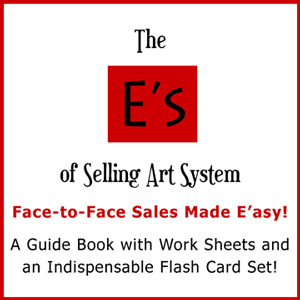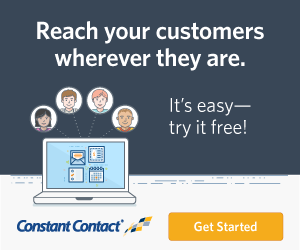In recent years, I have covered a lot of subjects in my marketing blog posts and shared free hints and tips to help you grow your business. However, the elephant in the room – the subject I have been avoiding – is copywriting.
How you write about your products or services is very important to growing your business. Whether you are looking for donors on IndieGoGo, offering a product, a service, or a membership – the more people who believe in you and will “invest” in you, the better. For that to happen, it requires writing good, readable, and enticing, copy. Nod your head if you agree!
We know that copywriting is the key to getting participation (like you nodding your head) and/or money from devoted fans or virtual strangers. But what works? What gets them to push the “buy now” button or hand you their credit card? How can you write so you can sell someone something, without sounding like you are trying to sell them something?
Words are the start, but how you arrange them is what matters.
Do you know what a “sales letter” or “sales copy” should sound like and more importantly, “feel” like? Have you considered creating a landing page for your website, but are not sure how? Are you confused about what to include in a brochure or on your about page?
Boy – I am full of questions, aren’t I?
Let’s tackle this head on. I have put together the six steps below from my accumulated exposure over the years to several top marketing gurus, a few well-notated books in my library, reading lots and lots of “how-to” blog posts, and an online course I am taking right now on how to create online courses.
(Yes, I am going to be creating online courses in case you haven’t heard. Sign-up for future notifications or add this to your current subscriptions.)
These six steps are a prescription – a method – used by marketing professionals for every situation you can imagine. As you tackle your next bit of writing, these are the areas that need deep consideration. And Do Not change this order.
1. Start with their problems.
What problem(s) are you able to identify that you know you can solve? What are the needs that you and your offer can take care of now or soon? How can you show that you understand the pain (or desire or fear) they are experiencing? How can you empathize in a way that makes your offer compelling because you have shown them that you “get it”? You need to show them that you “get them” so you can develop trust.
If I feel you understand my needs, I am likely to trust you to fulfill my needs. Click To Tweet
You should avoid trying to convince people that you have a great company or product, and instead, try focusing on the needs and concerns of the prospective buyer. It’s all about them. (This is true in face-to-face selling also by the way.)
2. What is the over-reaching “Story”?
In more traditional Marketing 101 parlances, I am talking about your “Unique Selling Proposition”. What can you share that shows them you have a deeper knowledge, a better mousetrap, or a finer finish with a brighter shine? What sets up apart from your competitors?
Why are you passionate about what you have to offer? Can you help them feel their connection with their current situation and move them to want to explore a solution because of your story? This is how you will position yourself over and over again. So get a clear picture of what the story is behind your business and be ready to highlight that every chance you get.
3. What is your BIG idea?
What is the driver, the idea, behind your business? What are you actually trying to sell? When I say Louis Vuitton, many will think “expensive handbags”. The product-line certainly includes handbags, but the Big Idea is the exclusive “status” that ownership brings with the purchase.
You want people to have a clear picture of what you can bring into their lives outside of just your product or service. While it is somewhat connected to your brand, your brand is actually enhanced by the Big Idea behind your brand.
Another example might be a business selling spa retreats. Yes, you have a plethora of spa treatments and special massage therapies, and some of the best mud baths in the world, but is that what people are buying? What you are really selling is relaxation, peace and serenity, a community of caring therapists, and an overall sense of well-being.
If we were to put all that into one single Big Idea – what would that be? How about being “lovingly pampered”. Who doesn’t want to be pampered and feel loved? Is this starting to make sense? I hope so!
4. What is your promise?
Deeply attached to the Big Idea is The Promise. This is not your money-back guarantee promise, but rather the projected good outcome for your buyer.
Can you save them money or add to their security or well-being? Or maybe the product or service will save precious time or remove some specific hassle? Or, like the pricey handbags, can you offer them an “unspoken” status boost?
Maybe you will add to their financial success with a new tool or new way of doing some task? Or maybe, if you are in the artist community, it is a promise of a lifetime of joy with every future engagement with your art object. (And potentially a boost in status, too!)
Take a look at my logo at the top of this page. I say in a clear voice, that My Golden Words “get the right words out”. That’s my Promise. The Big Idea is that people who hire me to do their writing will “appear more professional” which will create more trust, which leads to more sales.
What promise can you offer that is unique to you and your product or service? In other words, what are the benefits of doing business with you? What are you really offering?
5. Now get specific.
Up to this point, you are creating emotional ties. You are creating a deeper urge and giving your potential customer the desire to purchase. They have begun to imagine this purchase or might even start seeing themselves using your product or service. The desire is building. It’s time to light up the part of the brain that is all about the reasoning.
They now need to answer to that logical side. Most of us do anyway.
You need to give them the rationalizations to win the argument they are having with themselves. We all need this in order to “justify” our desires. This is where you move them from “wanting” to spend into rationalizing that they “need” to spend. It’s in the specifics – the features – that they find the “excuses” and the confidence in purchasing.
So using the spa retreat as an example, the benefit – the specific and rational reason to go on a retreat – is that they will return to their real world with a better ability to handle the day-to-day stresses and work and home life will be in better balance.
For my personal copywriting services, someone for whom I “get the right words out” might make more sales.
So getting into the specific features is imperative. This is the actual features that they will reap the benefits from. Most of us have succumbed more than once to this messaging. First, they woo us, then give us all the excuses needed to backup the growing desire to indulge ourselves. It’s a science.
6. Last, but not least: Proof. Prove you are worth it.
Prove that they have nothing to lose and everything to gain. This is where you will tap into your social proof. This is where you will provide evidence that you are the authority or the best in your class or a leader in your field. This is where you do some name-dropping if possible. Any and all endorsements need to go front and center.
Got testimonials? Don’t hold back. Try to have “real” testimonials with full names and photos if possible.
If you have a page full of what reads like phony testimonials with only a first name or initials and generic high-five “atta’ boy” comments, you risk losing all the credibility you have built up to this point. One or two real testimonials from real people will always be better than dozens of questionable “reviews”. Even no testimonial is better than a generic one.
And this is also where you put your money-back guarantee. This is one of the most powerful ways to show you totally stand behind your offer. If it’s a service with a monthly fee, maybe give them the first month free as a trial.
Your offer needs to convey that you believe they will benefit and if they don’t you will give them back their money.
Will you have a few refunds here and there? Sure. But you will have more sales with a satisfaction guarantee of some sort then without. We all are more willing to give something if we have a risk-free offer or a free trial period. Period.
It’s why I offer everyone a free 30-minute brainstorming consultation appointment with no strings attached. We might never have a paid session, but once someone has experienced my caring concern and generally helpful spirit, they are more likely to book future appointments. Or maybe they will refer a colleague. Or maybe we just have a great 30 minutes together and they get a terrific idea and run with it and thrive. Woot!
Are there are some situations where this is impractical? A few. For example, I don’t think a spa retreat is expected to give a full refund. My advice is to look at your competitors and see how they handle this. Meanwhile, if your industry has this as a standard practice, guess what?
This is really your best chance at having your best foot forward as you are growing your following. If you can figure out a way to make the purchase even somewhat risk-free, this is a great benefit to your buyer and creates a lot of goodwill and takes a lot of the uncertainty out of the picture.
Can you handle this or are you overwhelmed?
I hope you are not overwhelmed. I wasn’t sure I could explain this in a blog post. But I had to give it a go.
So please… tell me in the comments if I pulled this off or not!
It’s so worthwhile to get this approach under your control. It’s invaluable to take a hard look at your current writing. This is not for all writing, just your sales copy. Study your website and/or brochures or any writing you use to sell to the public or grow a trusting relationship.
Another offer you can’t refuse
I really want to help, so just as I did in the last Marketing Blog post, I have a special offer for the first five who respond. Put your website in a comment (or an email if you are feeling shy) and let me know what piece of writing you want me to review.
FYI, I will give my critiques in a private email for those first five who want my input.
I won’t rewrite a page of content or review dozens of product descriptions for free, but I will give you a head’s up and likely send you a quick re-wording if anything is really off-the-chart. I can’t/won’t remain silent if I see anything which might actually be damaging to your brand or positioning or selling momentum.







Golden Words for sure. Needed this info yesterday. lol.
Well… I hope you can use them tomorrow or the next day or…. Thanks, Sylvia!
Hi McKenna,
Thank you for your clear and informative blog about copywriting and sales pages. I’m working on improving my website and recently rewrote my about page. I wonder if you would critique my about page?
http://www.RuthSoller.com
Thank you for your time and help.
Of course, Ruth! Happy to help… Off I go and I will give you some thoughts in a private email later this morning. And I am so glad that you found this “clear and informative”. It’s taken weeks to pull this one together.
Two quick comments that I share publicly because they are common issues:
1. Your about me page (especially true of artists) should be in first-person. Third-person is reserved for sites that are featuring you. You automatically create a facade – a distance. This is opposite of what you want to create with people who you need to build a trusting relationship.
2. Keyword stuffing is no longer useful. It is not tolerated by Google and when they sniff your site, you can be downgraded. Here’s the official guide direct from google.
Hi Mckenna,
This is super-useful information, thank you. I will take this away to work on. My new website went live today! If you have a moment to look at the text on my home page especially the strap line, I’d be grateful for any pointers, Rebecca
NICE to hear from you, Rebecca! Thank-you for your feedback. And yes… get out a notebook and start working on this. It’s quite a chunk of information, so break it down bit by bit and I know you will be able to create great copy.
Oh… I can’t wait to see your new site. The previews I saw were astonishing. On my way now!
Hi McKenna,
I enjoy reading your posts. If you can look at my “About” page I would appreciate your advice
http://www.nancybassartist.com
nancy
Hey NANCY!
I will tell you what I told Ruth: ALWAYS first person on your own site. In addition, I would take the two cluttered paragraphs at the bottom and turn those into a more tradition “list” of your accomplishments. Right now it’s a visual barrier to see all that heavy text. Remember: 55% of people leave a page after 15 seconds. You have nothing that is easy to digest in 5 seconds or 50 seconds.
ALSO – there is NO reason on earth to send people away from YOUR site to learn what others have written about you. EVER. The goal is to keep them in your loving arms as long as possible.
You could add those posts about you by the two bloggers to your “List” under the category of Media Mentions or something along those lines.
You actually say some nice things on your commission page… move deeper in that channel. Why do you love to paint cows? What is it about painting a cow that your collectors and site visitors find irresistible? What can you say that will endear your spirit to their spirit? How can you make them “get you”.
If you are truly stumped, I can interview you and create an “about” statement. It’s a really important first impression and well worth your investment in time or – hiring me – a very small sum of money.
As always a brilliant post Mckenna. I really look forward to your weekly posts. I learn something new in every post. I’m always looking ways to improve my website – and from this post, I’ve got more work to do. Thanks so much for sharing, you rock sister!!!
That means a lot coming from you Fiona. You are such a good marketer with such amazing talent. I am so pleased to know I can help in any way.
Thanks McKenna for all your thoughtful suggestions. I am going to digest what you have recommended and may indeed hire you for help.
Much appreciated
nancy
It’s a lot to digest, for sure! I just re-read it this morning and my head is spinning. Get in touch anytime. Free 30-minute consult is my starting point, Nancy. Here’s the Link to set it up – it requires a quick survey so I have some insights into your business/marketing status..
If I had to guess, I think you are like the rest of us: a bit shy and not wanting to sound like a braggart. But not to worry. My Golden Words can put the right words out and make people feel right a home on your site!
Hi McKenna – I cant work out if I am in the first 5 ( some people diddnt leave an address) but I appreciate your blogs and would love a bit of feedback on my front page
http://www.mandyevansartist.com
Thanks again for your blogging and have a great day
Mandy
Well, Mandy, this request from you is outside of the five as I had some private emails from shy people. But, I couldn’t resist. However, this free check-up was intended to be about your selling (copywriting) skills, but I couldn’t read fast enough to critique your writing. I had to give up.
Your site needs a full review. There are many “broken” things that really were annoying me and after about 90 secs – I simply had to leave. I love the look of the site upon immediate landing, but your UX and UI are both missing the mark. I recommend you get a free five-minute and anonymous (non-professional) review from the folks at Peek. They are UX centric, but it’s free and they send you a video. Let me know if you want a full review from me. We can do it as a screen sharing session.
Bottom-line: I left there not even sure what you do – are you a web designer or an artist? What’s in it for me to stick around? I was frustrated – even more so because your site is so beautiful.
Sorry, but as everyone here knows… I try to help with honesty AND diplomacy. I hope you see both qualities in my response.
Hey McKenna,
Thankyou so much for this – as shocking as it was -its what i really needed to hear –
i am going to send that link to you again one day (after a complete overhaul)
A bummer that you didnt understand what i am doing –
I constantly struggle with copy, and expressing what I am doing in a succinct way (so much information – so little space)
…I am an artist – on a mission to do 10 000 hours of website making in order to master it and use it like a tool to make art (and I also have created a series of limited edition posters to sell as a mail order product) – so each month, as part of a practice to learn this new technology, i make a new website themed around one of the limited edition prints..like a website as a blog/social media campaign/evergreen content/practice
This is a huge – long term plan – and essentially i have only just started the project (less than a year of implementation), and i have been putting off rehauling the main site for too long
back to the drawing board (literally)
Thankyou again for your time and advice,
have a great day
Mandy Evans
Let me know if I can be of any further help. And send your site to Peek.com and see what they say, too. Best wishes!
http://www.CuttingBoardsWI.com Guess I’m too late for the one of the first 5…dang. I purchased your manual and let me say it worked. I have 2 businesses. Cutting boards (husband involvement there) and ink painting – http://www.artfulearth.com. We sell the cutting boards at shows and do very well. I’ve just started selling my artwork at shows and that too is going well. Took much of what you taught in your course and applied it to my artwork. Just wanted to say thank you! Great info that translated into sales.
Dang – I love your sweet testimonial, Denise! Can I add it to my testimonial page? Meanwhile, you just “bought” yourself a quick review. I will go look at your artist statement tomorrow and contact you via email with any thoughts.
McKenna!! You Rock!! I always love your info and need to absorb so much more.. I have been trying to figure out what to do to get my website more “organic” to find and your referral to Googles Guide… was like… EUREKA!!! Once again, you are amazing!
Anna
Wow! Thanks Anna. You just made my day. I am so dedicated to helping artists move upward and it’s always nice to know when someone got lifted up in any way!